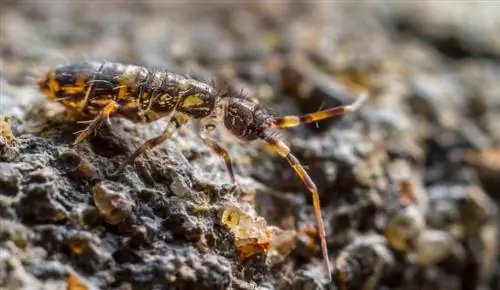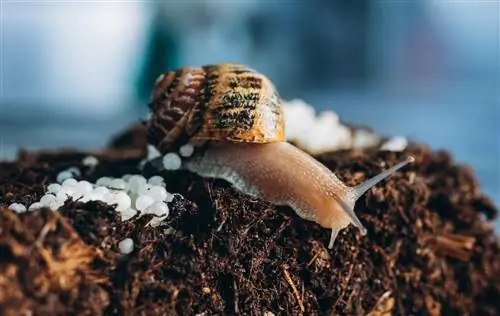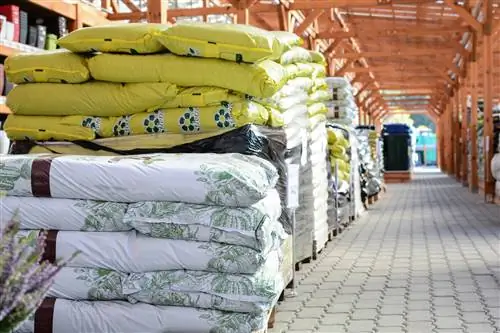- Author admin [email protected].
- Public 2024-01-05 20:48.
- Last modified 2025-01-23 11:22.
Various pests can occur in the potting soil, which are usually only discovered by chance. If jumping animals are observed, they are springtails. Since they can damage the cultivated plants, intervention is necessary.

How do I control springtails in potting soil?
To combat springtails in potting soil, you can immerse the affected plant in water, dry out the soil, or use predatory mites. These measures can curb the growth of springtails and prevent them from causing damage to plants.
What are springtails?
Springtails that live in potting soil have a whitish color. There is a jumping fork on their body that they use to hop around on the surface.
They love moisture and feed on dead plant material. As a rule, potting soil consists of peat, compost or humus, so there is plenty of dead plant material for the springtails to feed on. As they break down the dead plant material, new humus is formed, which in turn serves as food for the plants. However, the springtails multiply rapidly and on the one hand become a nuisance, on the other hand the food in the soil becomes scarce due to their large numbers.
The damage caused by the springtail
When there is little or no food left in the soil, the springtail begins to feed on the roots of plants or young seedlings.
The plants can no longer feed themselves properly and become stunted. Disease germs can also penetrate the plant at the damaged areas and kill it.
Combating springtails
If springtails appear in large numbers (for example due to excessive fertilization), control measures are required, such as:
- with water
- with dryness
- with predatory mites
Use water against springtails
Although the animals love moisture, they cannot tolerate masses of water.
- Take a large bucket and fill it with water.
- Place the plant with pot in the water so that it is completely covered.
- Wait about half an hour, then the springtails should swim on the surface of the water.
- Drain the animals.
- Take the plant out of the bucket and refrain from watering for a while.
Drying out springtails
This method is recommended if the animals appear in the garden bed or in large containers that cannot be submerged. Watering is kept to a minimum. Since springtails love moisture, they will migrate immediately if it becomes too dry for them.
The use of predatory mites
The predatory mites, as the name suggests, are predatory. They suck out the larvae of various pests and thus ensure that the pests disappear from the potting soil.






